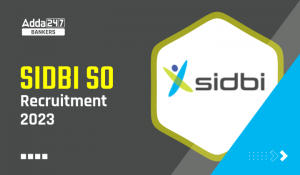Dear BA’ians,
All those who are preparing SIDBI Grade A exaam to be held on the 24th of January 2016, we bring to you the format and a few topics related to the descriptive exam. The descriptive exam will comprise of 2 questions to be answered within 45 minutes. One question will be a Business Letter and the second one an Essay.
A business letter, as the name suggests, is a letter which has a formal tone and is used for business purposes. Apart from this, business letters are also written for conveying messages to people who we do not know personally. This makes the business letter different from the usual casual or informal letter.
While writing a business letter, a person has to follow certain rules. One of the most important rules is that it should be short and concise. Businessmen do not have the time to read long letters and hence, the letter should not be more than a page i.e., with maximum 2-3 paragraphs. Apart from this, you have to follow a unique format for business letters, which differs to a large extent from informal letters.
Business Letter Writing Tips:
It will be a good idea to gather some crucial information on the things that you have to keep in mind while writing a business letter. Here, you will find some important tips for the same.
Sender’s address and date:
Recipient’s name and address:
Salutation:
Subject: After the salutation comes the subject line where you have to mention the purpose of the letter in short. Make sure that the subject line is in upper-case characters and is aligned either to the left or to the center.
Body:
Complimentary closing:
Enclosure:
BUSINESS LETTER FORMAT:
Address
Telephone Number
Email Address
Date
Recipient’s Name
Address
Dear Mr./Ms. (Recipient’s Full Name),
Subject: (PURPOSE OF THE LETTER)
In the first paragraph, you can introduce yourself, if the recipient does not know you. After this, mention the purpose of the letter. (Use Double Paragraph Spacing)
In the second paragraph, give out the details i.e., the facts that support the statement you made in the first paragraph. You can end the letter with this paragraph or you can have another one, if the information you want to convey does not fit in this paragraph. Complete the letter by thanking the recipient for taking out time to read the letter.
Respectfully Yours,
(Your Signature)
(Your Name)
Enclosure(s) (mention the number)
- Writing a job offer acceptance letter for the post of Assistant Manager
- Complaint to CEO regarding the extra work in office
- Letter to bank manager requesting to extend the joining period as you have received the offer letter for the bank job.
- Write a letter to the Editor, the Hindu, expressing your deep concern on the impact of adult graded cinemas on young minds.
- Write a letter to your manager asking permission for a leave to attend a family function.
- Write a letter to a student preparing for his Board Examination giving tips healthy study habits.
- Write a letter to the Editor of a newspaper commending it on an article published in it regarding Environmental awareness and adding your own views on the duty of every citizen to protect the environment.
- Write a letter To the bank manager for closing of your savings account Write a letter To you bank for a loan to have higher studies in USA.
- Write a letter to the company for accepting the job offer of an assistant manager in the company
- Write a letter on behalf of your department to the CEO of your company for working in late hours and not appreciated by management members.
II) We are present to you “How to write Essay?” and few points to remember while writing an essay in the exam, which will be important for the exam.
1. Analyse the prompt.
Note exactly what is asked in the question.
Write down the prompt on the rough page.
Underline the key words in the prompt. Look for words like “explain,” “identify,” “analyze” or “define.”
Break down the prompt into components. If you are to “identify” something and then “analyze” it, then write 1 paragraph identifying what’s requested and a second paragraph analyzing what you identified.
2. List all of your ideas.
Write short sentence fragments or keywords of all of the facts that you can remember. These should be facts that will support the arguments or statements that you will make in your essay.
3. Write a thesis statement for the entire essay.
This statement should identify the point that you will make in your essay.
Avoid writing statements about yourself. For instance, don’t write “I think” or “The point I will make today is…”
Make the thesis statement specific.When writing about an interpretation,use neutral language to state your opinion.Write “Jawahar Lal Nehru will always be remembered as a great Indian Prime Minister because he arguably ended the slavery in India.” Avoid writing “Everyone thinks Jawahar Lal Nehru is the best Prime Minister in history.”
Make every paragraph in your essay after carefully considering the thesis statement.
4. Divide the facts that you listed earlier into 2 to 4 groups.
Note the common characteristics of the points in each group. The common characteristics will become the topic sentences for your body paragraphs.
Discard ideas that don’t support your main points. Adding additional ideas will make your writing unfocused.
Rank each group in order of importance. Start with the least important point in your first body paragraph and conclude with your strongest point in your last body paragraph.
5. Write the topic sentences for your body paragraphs.
Use 1 or 2 sentences for each supporting point in your paragraphs. Make sure the sentences directly relate to the paragraph’s topic sentence.
State the supporting point. Then, state why the point is important. Never write something down without explaining its significance.
6. Write the concluding statements for each paragraph.
Restate the argument that you made in your topic sentence.
7. Create a short introduction for your essay.
For example, use a fact, quote or statistic that relates to your thesis statement. Your thesis statement should be the last sentence of your introduction.
8. Write a conclusion. The conclusion should restate the thesis statement, briefly summarize the arguments that you made and finish by stating the ultimate point of your essay.
Few points to remember while writing essay:( 35 marks)
1. Choose the title very carefully in which you are perfectly at home. Never choose a title about which you have only hazy and ambiguous ideas.
2. You must jot down your points or ideas before you start writing the essay.
3. Do not go against the title generally.
4. The introduction should be direct and relevant . Do not beat about the bush and
deviate from the title too much.
5. Avoid your essay with redundant quotations which might can show lack of expression.
6. Do not use stale idioms and clichés too much like ‘leaving no stone unturned’ or Rome was not built in a day’.
7. Put each main idea in to a separate paragraph.
8. You must not give numbers to paragraphs nor is there any need of giving sub-headings.
9. Avoid the use of slang and colloquial terms and try to develop a graceful, dignified and literary style.
10. The essay should be written in a simple language. Sentences should be terse and short.
11. Let the tone of the essay be informative and suggestive.
12. Always remember that the beginning and the ending of an essay are very important, so give them the maximum attention.
13. Never give a categorical or one-sided conclusion. The conclusion should always be balanced one.
14. Write in a beautiful and legible handwriting. A pleasing handwriting is always an asset
15. You must revise your essay after completion to correct the mistakes, if any.
It is difficult to predict the exact topics that will be covered in the exam, but you should certainly have knowledge about the following topics. Links of some of the topics have been mentioned under the topic.
1. Does India need bold capital investment?
2. Gold Related Schemes
Click Here
Click Here
3. Is progress possible without peace?4. How has China Downturn Impacted India?
Click Here
5. Climate catastrophe are due to man’s wild construction.
Click Here
6. Sustainable Development
Click Here
7. The marginal cost of funds-based lending rate (MCLR), the new way of deciding the interest rate
Click Here
8. NITI Aayog – Objectives and Composition
Click Here
9. Why oil prices keep falling — and throwing the world into turmoil
Click Here
10.Start up; Stand up India: A new Initiative
Click Here
11. BANKS BOARD BUREAU: Another Initiative for PSB’s
Click Here
12.A brief on DOMESTICALLY SYSTEMICALLY IMPORTANT BANKS
Click Here
13.India Economic Reform
Click Here
14.MUDRA Bank – Funding the Unfunded
Click Here
15.PRIORITY SECTOR LENDING
Click Here
16.ALL ABOUT NBFC’S
Click Here
17.Green Bonds : A Few Insights
Click Here
18.Payment Banks : A Step Closer Towards Financial Inclusion
Click Here
19. Small and Medium enterprise in rural India
20. Facts about GST and its importance
Click Here




 SIDBI Grade A Cut Off 2023, Check Previo...
SIDBI Grade A Cut Off 2023, Check Previo...
 SIDBI SO Recruitment 2023 Notification O...
SIDBI SO Recruitment 2023 Notification O...
 SIDBI Grade A Psychometric Test 2023, Ch...
SIDBI Grade A Psychometric Test 2023, Ch...



